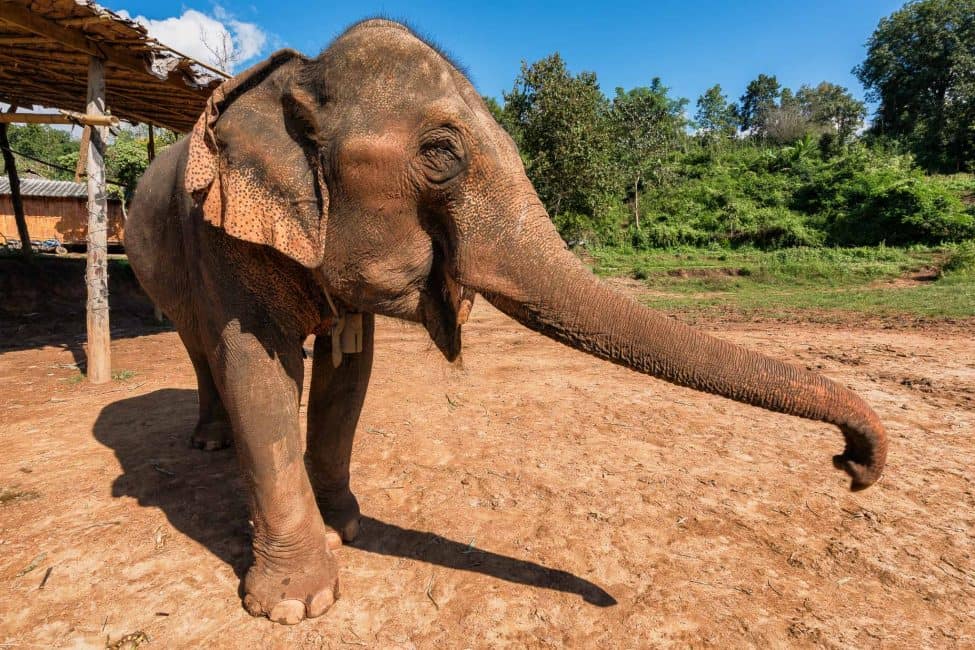1. Introduction to Responsible Elephant Tourism
Many people travel to Thailand to see elephants. However, it’s crucial to consider responsible travel. Elephants are often subjected to mistreatment for the entertainment of tourists. Fortunately, there are options to visit elephant sanctuaries in Chiang Mai instead.
2. Elephant Sanctuary Chiang Mai
Having experienced riding an elephant years ago, we can confidently say that visiting an elephant sanctuary is far more enriching. Today, an increasing number of travelers are prioritizing responsible tourism in their itineraries.
3. The Importance of Visiting an Elephant Sanctuary
Rather than engaging in rides and exploitation, tourists are supporting wildlife initiatives that foster economic benefits for local communities. Many travelers are starting to recognize the value of providing a nurturing environment for elephants.
4. Traveling with Cathay Pacific Airways
Our trip to Chiang Mai was planned on short notice, taking advantage of Cathay Pacific‘s new direct routes from Hong Kong. This airline connects Canada to over 40 Asian destinations, including 22 cities in Mainland China.
5. Choosing the Right Elephant Sanctuary
Many friends recommended Save the Elephant Foundation, known as a leading sanctuary. Unfortunately, they were fully booked, prompting us to consider alternatives.
After further research, we decided on the Elephant Jungle Sanctuary, an emerging favorite among conscious travelers.
6. The Elephant Nature Park Chiang Mai Experience
Our day began at 7:00 am with a songthaew ride from the luxurious Rati Lanna Riverside Resort and Spa, taking us 50 km outside of Chiang Mai.
Upon arrival, we donned shirts that help the elephants feel more at ease, as they associate these familiar items with positive interactions. This thoughtful gesture enhances the experience for both visitors and elephants.
7. The Context of Elephants and the Karen People
Before meeting the elephants, our guide explained the sanctuary’s operation and its contributions to the local Karen tribe, improving their quality of life.
Historically, the Karen people used elephants for logging. However, when that practice ceased, they needed to find alternatives to manage their elephants, often leading to neglect and harm.
8. Leasing Elephants to Riding Camps
Many local residents chose to lease their elephants to riding camps, drawn by the financial relief it provided, despite often exposing the elephants to neglect and abuse.
Mismanagement of these elephants is widespread, with inadequate feeding and harsh treatment reported in many camps.
9. The Efforts of Chiang Mai’s Elephant Sanctuaries
The Elephant Jungle Sanctuary is actively rescuing mistreated elephants, providing them with a peaceful haven. Rehabilitating these animals is a gradual process, given the contracts many camps have established.
10. Understanding the Reality for Elephants
It is vital to recognize that these are not wild elephants; they have been domesticated and cannot return to the wild.
Nevertheless, these sanctuaries offer rescued elephants a chance to live free from exploitation. Despite facing challenges related to their habitat and human interaction, they are provided with care, comfort, and a life improving over time.
11. The Economic and Emotional Landscape for Elephants
Of the 4,000 elephants in captivity in Thailand, a staggering 70-80 percent endure harsh conditions in various industries, such as tourism and logging.
- An elephant can cost around $60,000 USD to purchase and requires roughly $600 per month for care.
- Contributions from tourists support both the well-being of the elephants and the sanctuary’s operations.
12. Our Memorable Visit to the Sanctuary
Upon our arrival, we interacted with several elephants and were provided with an abundance of treats, including sugarcane and bananas. It was heartening to see they were well cared for and not starving.
After feeding, the elephants enjoyed a mud bath, which protects them from sunburn and insects. The joy they exhibited during this process was clear, reassuring us of their well-being.
13. Supporting Elephant Welfare
After the bath, we rinsed the elephants in the river, offering a playful conclusion to our day. As they returned to their daily lives, we felt fulfilled knowing our visit contributed to their care.
Even though captivity isn’t ideal, such sanctuaries represent a significant improvement in the ongoing efforts to promote responsible tourism in Thailand.
Rescuing elephants from abusive environments is just the beginning of a long journey toward improving their lives. Opting for an elephant sanctuary over riding experiences is a crucial step in supporting ethical tourism in Chiang Mai and beyond.
14. Conclusion
To explore more about your travel options, consider flying on Cathay Pacific Airways, which provides extensive flight connections.
For accommodation, we recommend the Rati Lanna Riverside Resort and Spa, or visiting Elephant Jungle Sanctuary for a memorable experience.





